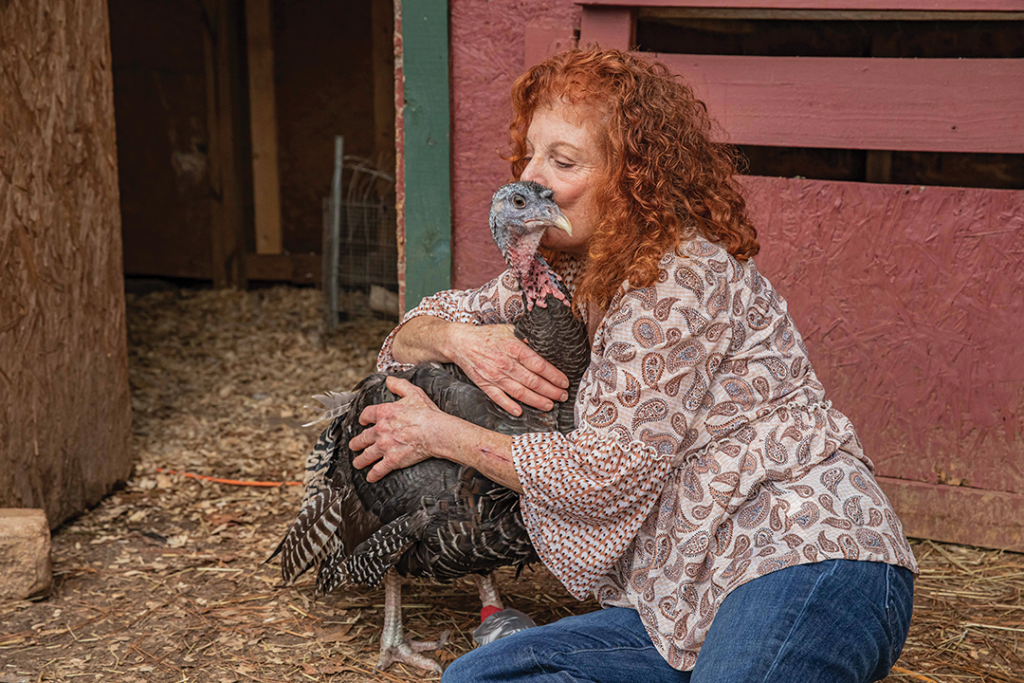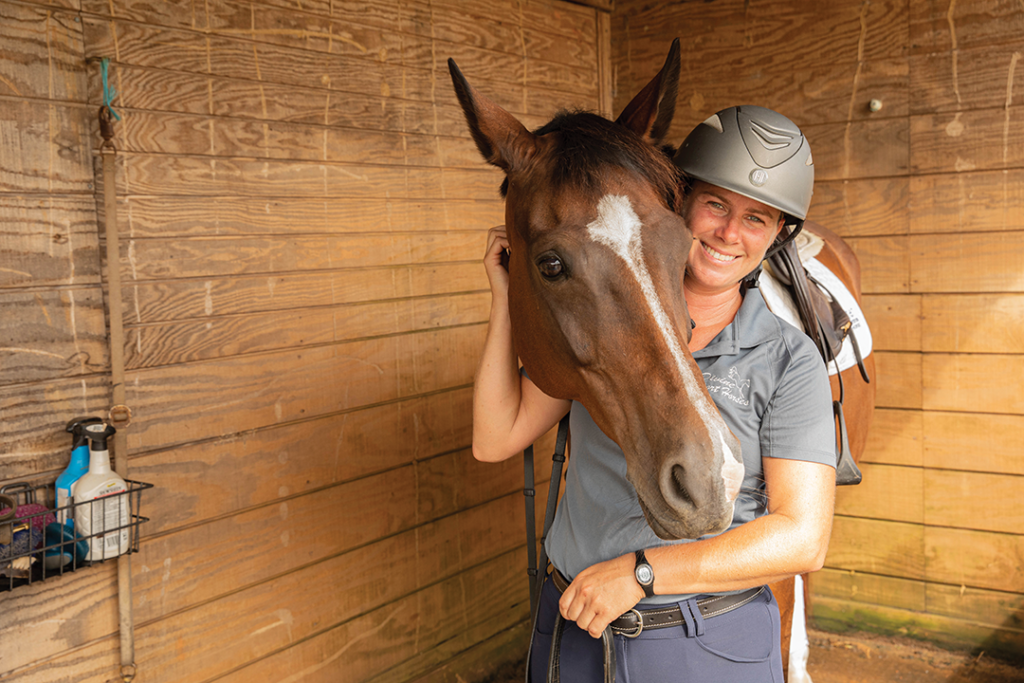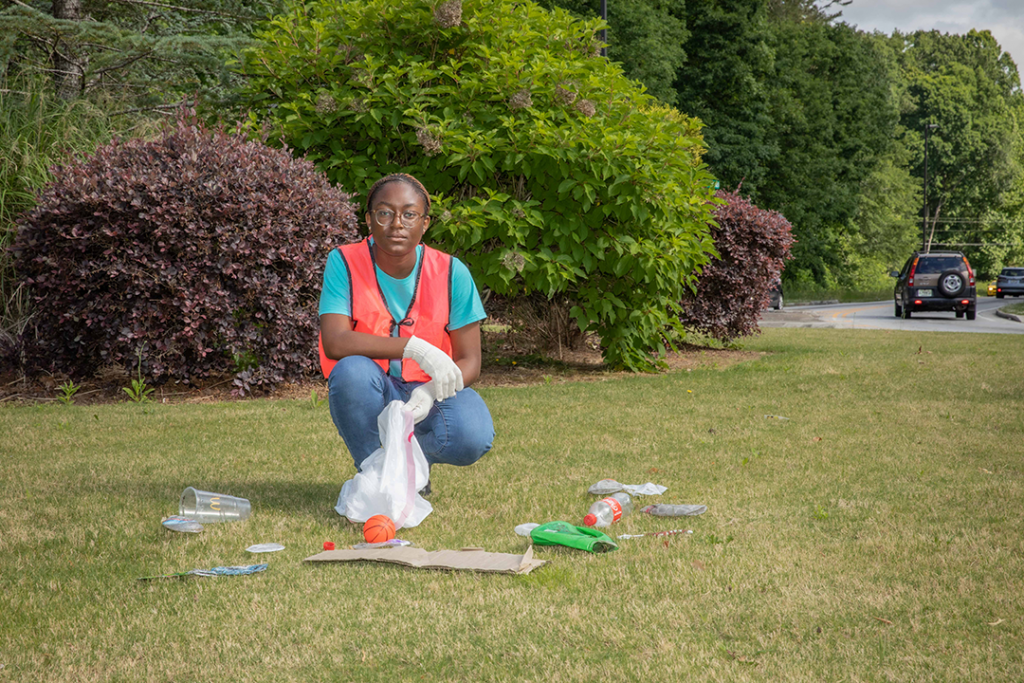With steps now being taken to add monarch butterflies to the Endangered Species List due to habitat loss and other factors, Connie and David Waller have made conservation efforts involving the beautiful but complex pollinators a life’s mission.
Connie Waller wondered aloud in the moment she first became aware of the unique migration of the North American monarch butterfly: “How could I have not known this?” The former director of Keep Covington/Newton Beautiful just happened to be watching a PBS program on the subject. “David and I have both been in the science field all of our lives,” she said, referring to her husband of 47 years. “I’m thinking, ‘I grew up on a farm. How could I not know this?’ I was absolutely fascinated.”
When later that same week the topic of monarch butterfly conservation came up at two seemingly unrelated social gatherings, Connie waved the white flag. “The whole week was nothing but monarch butterflies,” she said. She went home and told her husband what “little bit” she had learned. “David was so excited that I was excited about this subject,” she said. Their newly shared interest soon led them on a journey that eventually took them to a remote mountain range in central Mexico.

It was not until 1975 that a Canadian zoologist tracked down the monarch in the oyamel fir forests of the Sierra Madre Mountains and its extraordinary seasonal migration was discovered. Each year, beginning in the fall, monarchs east of the Rocky Mountains and as far north as Canada utilize air currents to travel up to 3,000 miles southward to Mexico. Monarchs west of the Rockies migrate to the southern California coast. Their arrival en masse is a magical display of color and graceful movement. The “self-propelled flowers” eventually land on branches and bark, blanketing trees in orange and black.
Having survived the epic southern migration and the long winter, these butterflies then begin the return flight northward. Females immediately begin looking for milkweed on which to lay their eggs, one generation making way for the next. From egg to caterpillar to adult butterfly, Generation One, as it is called, takes up the march. Feeding on nectar plants and mating as they go, these monarchs make it about one-fourth of the way before laying eggs and dying. This life cycle and flight pattern is repeated with each generation until Generation Four completes the journey. This so-called “super generation” then starts the whole process over as summer gives way to fall and monarchs once again flutter south on the wings of the wind.
“We’re doing it one monarch and one person at a time.”
Satsuki Garden Club President Connie Waller
Yet trouble looms large on the horizon as fewer and fewer of the flying insects are appearing. In fact, the North American monarch population has declined to the point that efforts are now underway to add them to the Endangered Species List; and it is not only the monarch that is threatened but other pollinators, as well. According to the National Wildlife Federation, “the monarch’s decline is an indicator of the habitat decline and stress that all pollinators are facing.” Since most plants depend on pollinators to reproduce, there is increasing concern that the earth’s food supply could, at some point, be compromised. It is a big—and complicated—problem.
The Xerces Society for Invertebrate Conservation lists loss of habitat, herbicide-resistant crops, pesticide use and climate change as reasons for the dramatic drop in the number of monarchs. While government agencies and the private sector slowly sort out solutions and who is responsible for what, conservation groups and individuals are doing what they can. Much of the conservation effort is directed toward expanding habitat by encouraging the planting of pollinator gardens.
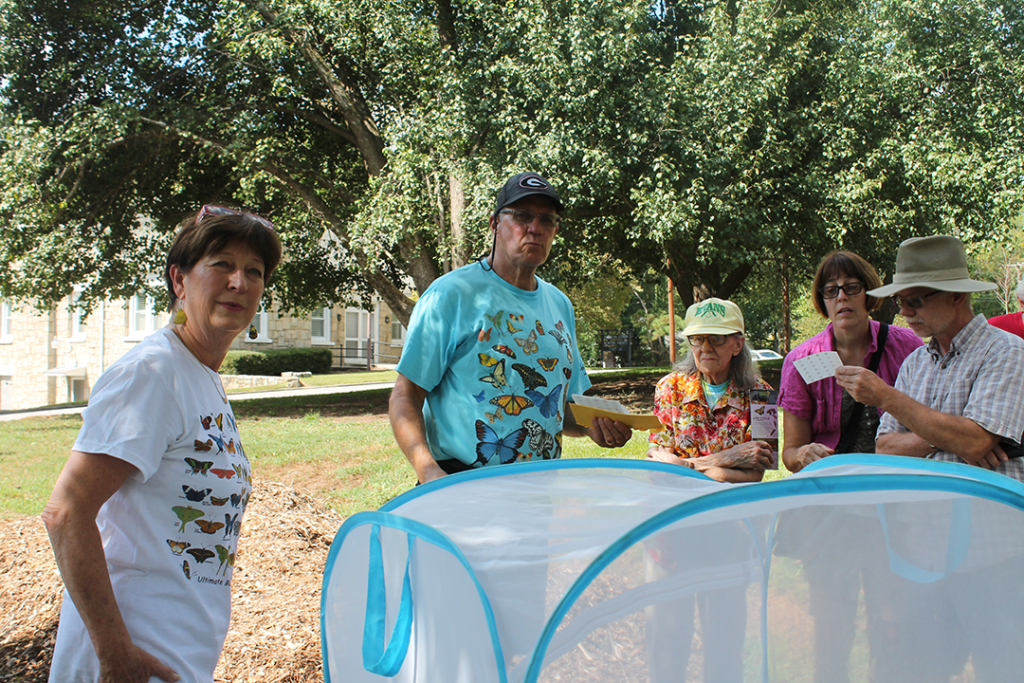
That is good news for the monarch, and it is how the Wallers first got their hands dirty. They planted their own pollinator garden, including milkweed, the only host plant that the monarch larvae will eat. “If you plant it, they will come,” David said. So they planted … and planted some more, installing gardens at their church, as well as on a golf course. As president of the Satsuki Garden Club, Connie has led that group to put in pollinator gardens at a local school and at Academy Springs Park, with plans to do more. The Wallers also conduct educational programs and seminars for schools, civic groups and just about anyone wishing to learn about monarch butterflies and conservation.
Their zealous commitment to the cause has earned them the distinctive title “Butterfly Blooming Idiots”—an honor conferred on them by a close friend. “David and I decided if we were going to be involved in this, we were going to go whole hog,” Connie said. That decision has resulted in a joint personal pursuit to learn all they can about the monarchs and to do all they can to help them survive.
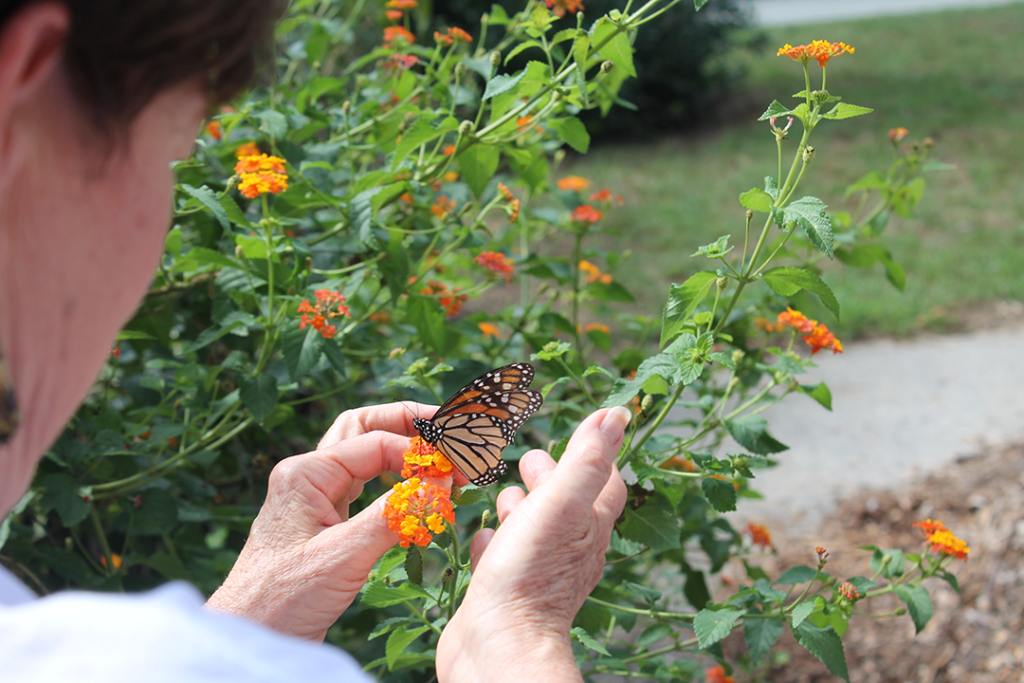
To that end, they have traveled to the National Butterfly Garden in Mission, Texas, and attended symposiums at the Rosalyn Carter Butterfly Trail in Plains; they have witnessed the spectacular winter gathering of tens of millions of monarchs in Mexico; and they have learned from national conservation groups like Monarch Watch and the North American Butterfly Association. However, perhaps their greatest resource has been their mentor, Virginia Linch—a woman David calls “a wealth of information.” She is the project director of Butterflies and Blooms in the Briarpatch, a non-profit conservation organization and garden located in Eatonton. “She’ll tell you exactly what to plant, what to do [and] what not to do,” David said.
Knowing what to do when it comes to butterfly conservation is critical. The Wallers found that out the hard way when they planted the host plant for another species of butterfly, the Black Swallowtail, in their front yard. The plants attracted egg-laying butterflies as hoped, but the caterpillars that hatched quickly died. The reason: The host plants had grown from seeds treated with pesticides.
“You have to use organic seed, or you have to buy from an organic grower,” David said. “You have to be very selective with where you get your plants, or you can do more harm than good.”
Though the monarch population has declined to dangerously low levels over the past 20 years, there are reasons to hope the tide could be turning. In 2018, for the first time since such measurements began, there was a 144-percent increase over the previous year. It is perhaps too early to tell what impact conservation efforts have had, as scientists are attributing the increase to ideal weather conditions. The Mexican government has also been working to stop the loss of habitat there by taking actions to protect the remaining oyamel fir forests. International and United States conservation groups continue to be engaged in the battle through education, political activism and through providing resources to people who want to help.

Milkweed is the monarch’s host plant—the only plant larvae eat.
David, a retired wildlife biologist, remains hopeful because of wildlife recovery efforts that have been successful in the past, citing the rejuvenation of wild turkey and bluebird populations in Georgia. He has ambitious plans to work with power and natural gas companies in the near future to see if milkweed could be planted along their extensive right of ways.
The Wallers have been involved in almost every phase of monarch conservation, from growing milkweed and nectar plants and raising butterflies in a protective cage to catching and tagging adult butterflies and showing and telling others how and why monarch butterfly conservation is so important. Their ultimate goal is to help recover the monarch population and keep it off the Endangered Species List.
“We’re doing it one monarch at a time and one person at a time,” Connie said.
Their devotion to monarch preservation is indicative of the broader love they both have for nature. Depending on who you ask, Connie either “follows after” or is “dragged behind” David on their many outdoor adventures.
“We’ve been down to the Amazon, stomped in the jungle, bird watching and seeing monkeys [and] put [our] hands in the mouth of a gray whale,” David said with a laugh.
They hope to see the annual Synchronous Fireflies Phenomenon this summer in the Great Smoky Mountains, where the females cover the ground and males fly overhead, all blinking in time. They plan to take their six grandchildren, ages 3 to 15, along with them. Just the two of them? “Just the two of us,” David said with a grin. “We do crazy stuff like that.”
Click here to read more stories by David Roten.


